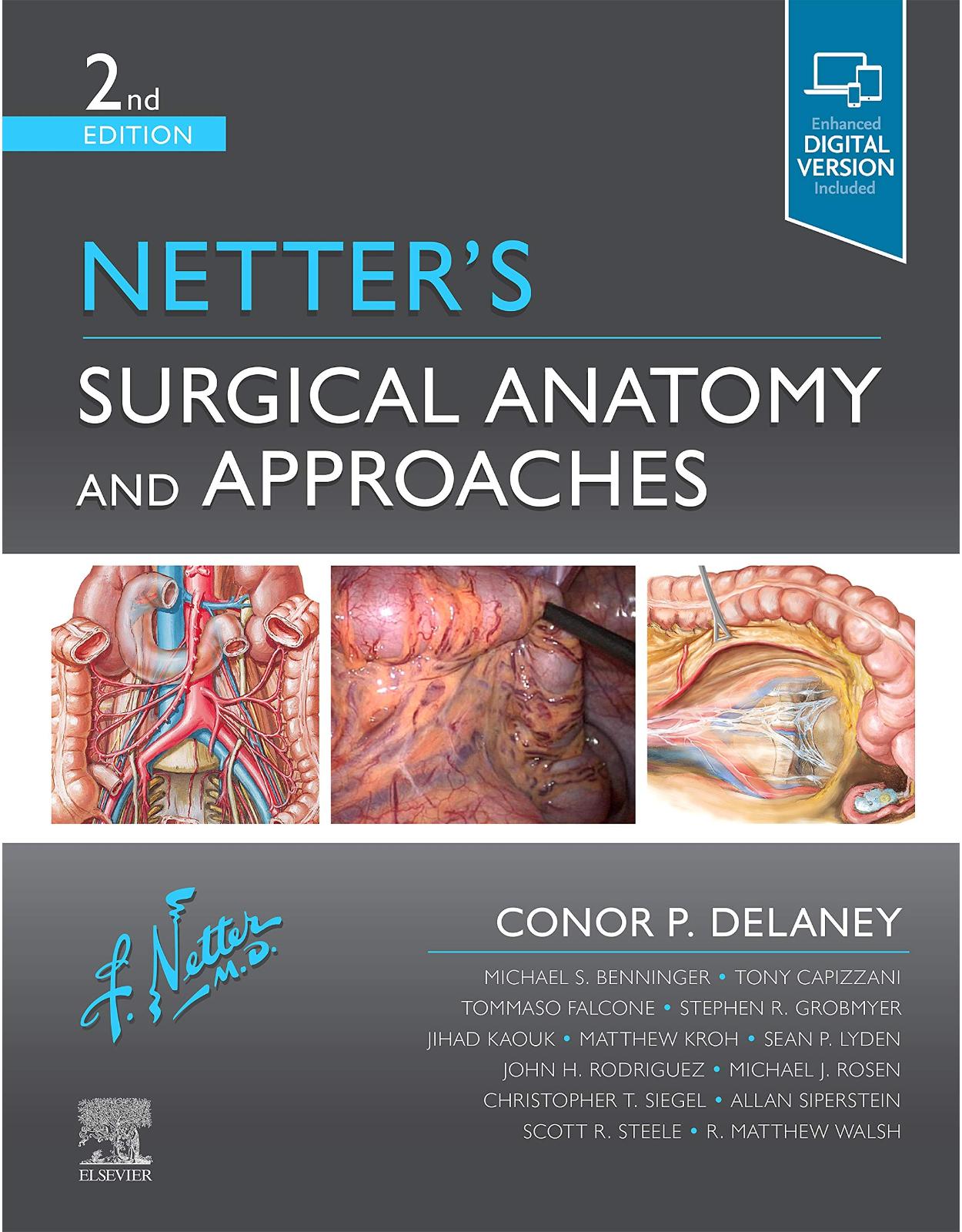
Netter’s Surgical Anatomy and Approaches (Netter Clinical Science)
Livrare gratis la comenzi peste 500 RON. Pentru celelalte comenzi livrarea este 20 RON.
Disponibilitate: La comanda in aproximativ 4 saptamani
Editura: Elsevier
Limba: Engleza
Nr. pagini: 768
Coperta: Hardcover
Dimensiuni: 20.96 x 2.54 x 26.04 cm
An aparitie: 1 Oct. 2020
Description:
Netter’s Surgical Anatomy and Approaches, 2nd Edition, provides a clear overview of the exposures, incision sites, surgically relevant landmarks, structures, fascial planes, and common anatomical variants relevant to general surgical operative procedures. Whether used in class, in the lab while learning anatomy, or in the operating room as a trusted reference, this highly visual resource presents unmatched surgical anatomy illustrations by world-renowned surgeon-artist, Frank H. Netter, MD, and new illustrations created in the Netter tradition, as well as surgical exposures, intraoperative photographs, and radiologic imaging.
Key Features:
- Discusses procedures and anatomy from a surgeon’s point of view.
- Features new content throughout, including more intraoperative imaging (both open and minimally invasive), more surgical views, and new coverage of POEM/POP/upper GI endoscopy and ERCP; esophagogastrectomy; laparoscopic Whipple; rectal prolapse; TEMS/TATME; sigmoid colectomy; oncoplastic mammoplasty; and retroperitoneal lymph node dissection.
- Presents uniquely detailed artwork of Dr. Netter, Dr. Carlos Machado, and other anatomy illustrators working in the Netter tradition combined with endoscopic, laparoscopic, and radiologic images—all integrated with expert descriptions of each operative procedure.
- Offers access to more than 30 videos that highlight anatomy relevant to the procedures.
- Enhanced eBook version included with purchase. Your enhanced eBook allows you to access all of the text, figures, and references from the book on a variety of devices.
Table of Contents:
1. Instructions for online access
2. Cover image
3. Title page
4. Table of Contents
5. Copyright
6. Dedication
7. About the Artists
8. Preface
9. Contributors
10. Section 1. The Neck
11. Chapter 1. Selective (Supraomohyoid) Neck Dissection, Levels I-III
12. Video
13. Introduction
14. Neck Anatomy for Surgical Planning
15. Incision Planning and Patient Positioning for Neck Dissection
16. Level IA-IB Neck Dissection
17. Level II-III Neck Dissection
18. Chapter 2. Tracheostomy
19. Video
20. Introduction
21. Indications and Principles of Tracheotomy
22. Preoperative Considerations
23. Perioperative Considerations
24. Surgical Anatomy and Open Tracheotomy Procedure
25. Percutaneous Dilatational Tracheotomy Procedure
26. Summary
27. Section 2. Endocrine
28. Chapter 3. Thyroidectomy and Parathyroidectomy
29. Video
30. Thyroidectomy
31. Parathyroidectomy
32. Chapter 4. Laparoscopic Adrenalectomy
33. Introduction
34. Surgical Principles
35. Surgical Technique
36. Tips and Tricks
37. Section 3. Upper Gastrointestinal
38. Chapter 5. Esophagectomy
39. Introduction
40. Surgical Approaches
41. Chapter 6. Minimally Invasive Antireflux Surgery
42. Video
43. Introduction
44. Surgical Principles
45. Preoperative Workup
46. Diaphragmatic Crura
47. Right Crural Pillar
48. Left Crural Pillar
49. Short Gastric Vessels
50. Phrenoesophageal Ligament
51. Crural Closure
52. Fundoplication Creation Around Esophagus
53. Chapter 7. Truncal and Selective Vagotomy
54. Video
55. Introduction
56. Anatomy: Innervation of the Stomach
57. Clinical Indications
58. Procedures
59. Chapter 8. Gastrectomy
60. Video
61. Introduction
62. Preoperative Workup
63. Anatomy
64. Surgical Approach for Gastrectomy
65. Surgical Approach for Gastrectomy (Continued)
66. Chapter 9. Gastric Emptying Procedures
67. Video
68. Introduction
69. Principles of Treatment
70. Nonsurgical Options
71. Enteral Access
72. Surgical Endoscopic Approaches
73. Surgical Approaches
74. Chapter 10. Roux-en-Y Gastric Bypass and Sleeve Gastrectomy
75. Videos
76. Introduction
77. Surgical Criteria
78. Surgical Anatomy for Gastric Bypass
79. Surgical Anatomy for Sleeve Gastrectomy
80. Chapter 11. Surgical Management of Achalasia
81. Introduction
82. Preoperative Workup
83. Therapeutic Considerations
84. Surgical Anatomy
85. Laparoscopic Heller Myotomy
86. Per-Oral Endoscopic Myotomy (POEM)
87. Section 4. Hepatobiliary
88. Chapter 12. Cholecystectomy
89. Video
90. Introduction
91. Anatomy
92. Physiology
93. Indications
94. Techniques
95. Special Circumstances
96. Chapter 13. Common Bile Duct Surgery and Choledochoduodenostomy
97. Video
98. Introduction
99. Cystic Duct Anatomy and Variants
100. Laparoscopic Common Bile Duct Exploration
101. Open Common Duct Exploration
102. Choledochoduodenostomy
103. Chapter 14. Hepatectomy
104. Videos
105. Introduction
106. Surgical Principles
107. Surgical Principles (Continued)
108. Right Hepatic Lobectomy
109. Right Hepatic Lobectomy (Continued)
110. Left Hepatectomy
111. Left Hepatectomy (Continued)
112. Central Hepatectomy
113. Associating Liver Partition and Portal Vein Ligation for Staged Hepatectomy (Alpps)
114. Chapter 15. Distal Pancreatectomy
115. Introduction
116. Surgical Anatomy
117. Surgical Approach
118. Chapter 16. Pancreatoduodenectomy
119. Video
120. Introduction
121. Surgical Approach
122. Chapter 17. Splenectomy
123. Video
124. Introduction
125. Anatomy
126. Surgical Principles
127. Laparoscopic Surgical Technique
128. Laparoscopic Surgical Technique (Continued)
129. Hand-Assisted Approach
130. Open Approach
131. Postoperative Considerations
132. Section 5. Organ Transplantation
133. Chapter 18. Liver Transplantation
134. Introduction
135. Hepatectomy
136. Implantation
137. Chapter 19. Living Donor Liver Transplantation
138. Videos
139. Introduction
140. Donor Assessment
141. Technical Aspects of Surgery
142. Graft Type
143. Recipient Surgical Technique
144. Chapter 20. Intestinal and Multivisceral Transplantation
145. Videos
146. Introduction
147. Nomenclature
148. Donor Surgery
149. Recipient Surgery
150. Chapter 21. Kidney Transplantation
151. Video
152. Introduction
153. Preoperative Planning and Consideration
154. Procurement and Preparation of Kidney Allograft on the Backtable
155. Kidney Transplantation
156. Chapter 22. Pancreas and Kidney Transplantation
157. Video
158. Preoperative Planning and Consideration
159. Simultaneous Pancreas and Kidney Transplantation
160. Kidney Transplantation
161. Revascularization and Reperfusion
162. Pancreas Exocrine Duct Management Via Duodenojejunostomy
163. Abdominal Lavage and Closure
164. Chapter 23. Laparoscopic Donor Nephrectomy
165. Video
166. Introduction
167. Preoperative Planning
168. Operative Techniques (Left Laparoscopic Donor Nephrectomy)
169. Chapter 24. Deceased Donor Organ Recovery
170. Introduction
171. Abdominal Organ Recovery
172. Standard Technique
173. Rapid Technique
174. Recovery of the Liver
175. Recovery of Pancreas
176. Recovery of Kidneys
177. Recovery of Iliac Vessels for Graft
178. Section 6. Lower Gastrointestinal
179. Chapter 25. Appendectomy
180. Video
181. Introduction
182. Anatomic Principles of Physical Examination and Diagnosis
183. Surgical Principles
184. Surgical Technique
185. Chapter 26. Abdominal Wall Marking and Stoma Site Selection
186. Introduction
187. Stoma Site Selection
188. Summary
189. Chapter 27. Right Colectomy
190. Video
191. Introduction
192. Superficial Anatomy and Topographic Landmarks
193. Anatomic Approach to Right Colectomy
194. Intracorporeal Anastomosis
195. Chapter 28. Left and Sigmoid Colectomy
196. Video
197. Introduction
198. Surgical Principles
199. Anatomy for Preoperative Imaging
200. Surface Anatomy, Incision, and Port Placement
201. Procedural Steps
202. Vascular Anatomy
203. Identification and Isolation of the Vascular Pedicle
204. Splenic Flexure
205. Sigmoid and Descending Colon
206. Upper Mesorectal Mobilization and Anastomosis
207. Chapter 29. Transverse Colectomy
208. Introduction
209. Surgical Principles
210. Anatomy for Transverse Colectomy
211. Completion of Transverse Colectomy
212. Chapter 30. Low Anterior Resection With Total Mesorectal Excision and Anastomosis
213. Video
214. Introduction
215. Surgical Principles
216. Anatomy for Preoperative Imaging
217. Anatomy for Colonic Mobilization and Dissection
218. Transanal Mesorectal Dissection
219. Chapter 31. Abdominoperineal Resection
220. Introduction
221. Principles of Preoperative Evaluation
222. Anatomic Approach to Left Colon Mobilization
223. Approach for Rectal Dissection
224. Approach for Rectal Dissection (Continued)
225. Chapter 32. Hemorrhoids and Hemorrhoidectomy
226. Introduction
227. Anatomy of Hemorrhoids
228. Minor Procedures
229. Surgical Options
230. Strangulated Hemorrhoids
231. Thrombosed External Hemorrhoids
232. Chapter 33. Perianal Abscess and Fistula in Ano
233. Introduction
234. Anatomy and Pathogenesis
235. Perianal Abscess
236. Horseshoe Abscess
237. Supralevator Abscess
238. General Principles of Treatment for Perianal Abscesses
239. Anal Fistula
240. Principles of the Treatment of Anal Fistulas
241. Complicated Perianal Sepsis
242. Chapter 34. Suture Rectopexy and Ventral Mesh Rectopexy
243. Introduction
244. Anatomy for Rectopexy and Pelvic Dissection
245. Suture Rectopexy
246. Minimally Invasive Ventral Mesh Rectopexy
247. Chapter 35. Ileal Pouch Anal Anastomosis
248. Videos
249. Introduction
250. Surgical Principles
251. Surgical Principles (Continued)
252. Ileoanal Pouch and Anastomosis
253. Chapter 36. Sphincter Repair and Sacral Neuromodulation
254. Introduction
255. Sphincteroplasty (Overlapping Sphincter Repair)
256. Sacral Neuromodulation
257. Stage 1: Implantation of the Electrode
258. Section 7. Hernia
259. Chapter 37. Laparoscopic Inguinal Hernia Repair
260. Introduction
261. Laparoscopic Approaches
262. Key Anatomic Concepts for Laparoscopic Repair
263. Principles of Laparoscopic Repair
264. Transabdominal Preperitoneal Approach
265. Transabdominal Preperitoneal Approach (Continued)
266. Totally Extraperitoneal Approach
267. Totally Extraperitoneal Approach (Continued)
268. Chapter 38. Surgical Approach to Chronic Groin Pain Following Inguinal Hernia Repairs
269. Introduction
270. Inguinal Neuroanatomy
271. Surgical Interventions for Chronic Postoperative Inguinal Pain
272. Chapter 39. Open Flank and Lumbar Hernia Repair
273. Introduction
274. Anatomy and Classification
275. Clinical Presentation
276. Imaging
277. Surgical Anatomy and Operative Steps
278. Surgical Anatomy and Operative Steps (Continued)
279. Chapter 40. Open Retromuscular Hernia Repair
280. Video
281. Introduction
282. Surgical Principles
283. Retromuscular Repairs and Adjuncts
284. Section 8. Vascular
285. Chapter 41. Carotid Endarterectomy
286. Introduction
287. Surgical Exposure
288. Carotid Bifurcation Exposure
289. Carotid Bifurcation Exposure (Continued)
290. Carotid Endarterectomy Technique
291. Carotid Endarterectomy Technique (Continued)
292. Closure
293. Chapter 42. Carotid Subclavian Bypass/Transposition and Vertebral Transposition
294. Subclavian Artery Reconstruction
295. Carotid Subclavian Bypass
296. Subclavian-to-Carotid Transposition
297. Vertebral Transposition
298. Chapter 43. Aortic Aneurysm Repair and Thoracoabdominal Aneurysm Repair
299. Video
300. Introduction
301. Surgical Planning
302. Transperitoneal Approach
303. Retroperitoneal Exposure
304. Thoracoabdominal Aortic Aneurysm
305. Special Concerns
306. Aortobifemoral Bypass
307. Ruptured Abdominal Aortic Aneurysm
308. Chapter 44. Visceral Bypass
309. Introduction
310. Surgical Anatomy
311. Surgical Planning and Revascularization
312. Antegrade Mesenteric Bypass
313. Antegrade Mesenteric Bypass (Continued)
314. Retrograde Mesenteric Bypass
315. Chapter 45. Radiocephalic, Brachiocephalic, and Brachiobasilic Fistula
316. Introduction
317. Preoperative Evaluation
318. Technical Considerations
319. Radiocephalic Fistula
320. Brachiocephalic Fistula
321. Brachiobasilic Fistula
322. Postoperative Monitoring
323. Chapter 46. Femoral Endarterectomy and Femoral Popliteal Bypass
324. Introduction
325. Anatomy and Topographic Landmarks
326. Common Femoral Artery Exposure
327. Endarterectomy and Patch Angioplasty
328. Suprageniculate Popliteal Artery Exposure
329. Infrageniculate Popliteal Artery Exposure
330. Bypass Conduits
331. Tunneling
332. Chapter 47. Femoral Tibial Bypass
333. Introduction
334. Femoral–Posterior Tibial
335. Femoral–Posterior Tibial (Continued)
336. Femoral–Posterior Tibial (Continued)
337. Femoral–Posterior Tibial (Continued)
338. Femoral–Posterior Tibial (Continued)
339. Femoral–Anterior Tibial
340. Femoral–Peroneal
341. Femoral–Foot or Ankle Arteries
342. Adjuncts for Bypass Success
343. Chapter 48. Above-Knee and Below-Knee Amputation
344. Introduction
345. Preoperative Evaluation
346. Surgical Principles
347. Below-Knee (Transtibial) Amputation
348. Above-Knee (Transfemoral) Amputation
349. Postoperative Care
350. Section 9. Vascular Access, Emergency and Trauma Procedures
351. Chapter 49. Tracheal Intubation and Endoscopic Anatomy
352. Introduction
353. Airway Anatomy
354. Indications for Intubation
355. Preintubation Airway Evaluation
356. Anesthesia and Airway Innervation
357. Laryngoscopy
358. Fiberoptic Bronchoscopy
359. Failed Intubation
360. Summary
361. Chapter 50. Chest Tube Placement
362. Introduction
363. Thoracic Anatomy and Key Landmarks
364. Technique and Steps
365. Special Considerations
366. Chapter 51. Emergency Thoracotomy for Trauma
367. Introduction
368. Surgical Principles
369. Thoracotomy
370. Open Pericardium
371. Cardiac Massage
372. Damage Control
373. Aortic Cross-Clamp
374. Summary
375. Chapter 52. Central Line Anatomy
376. Introduction
377. Venous Central Access Prepartion
378. Internal Jugular Venous Catheterization
379. Infraclavicular Subclavian Venous Catheterization
380. Femoral Venous Catheterization
381. Complications
382. Chapter 53. Arterial Line Anatomy
383. Introduction
384. Radial Artery
385. Axillary Artery
386. Brachial Artery
387. Femoral and Dorsalis Pedis Arteries
388. Chapter 54. Upper and Lower Extremity Fasciotomy
389. Introduction
390. Etiology of Compartment Syndrome
391. Clinical Diagnosis and Decision Making
392. Upper Extremity Compartment Syndrome
393. Surgical Principles, Anatomy, and Technique
394. Lower Extremity Compartment Syndrome
395. Surgical Principles, Anatomy, and Technique
396. Section 10. Breast and Oncology
397. Chapter 55. Mastectomy: Partial and Total
398. Introduction
399. Partial Mastectomy
400. Total Mastectomy
401. Modified Radical Mastectomy
402. Breast Removal and Reconstruction
403. Summary
404. Chapter 56. Breast Reconstruction
405. Introduction
406. Anatomic Considerations in Breast Reconstruction
407. Implant-Based Reconstruction
408. Autologous Breast Reconstruction
409. Chapter 57. Central Duct Excision and Nipple Discharge
410. Introduction
411. Preoperative Workup
412. Surgical Principles and Technique
413. Chapter 58. Sentinel Lymph Node Biopsy
414. Introduction
415. Selection of Dye/Radiotracer and Injection Sites
416. Lymphatic Drainage Patterns
417. Surgical Approach
418. Operative Identification of the Sentinel Lymph Node
419. Wire or Seed Localization of Sentinel Lymph Node After Neoadjuvant Chemotherapy in Breast Cancer
420. Lymphedema Risk
421. Chapter 59. Axillary Lymphadenectomy and Lymphaticovenous Bypass
422. Introduction
423. Axillary Lymph Node Dissection
424. Axillary Lymph Node Dissection (Continued)
425. Axillary Reverse Mapping and Lymphaticovenous Bypass
426. Summary
427. Chapter 60. Inguinal and Pelvic Lymphadenectomy
428. Introduction
429. Inguinal Lymphadenectomy
430. Minimally Invasive Approaches to Inguinal Lymph Node Dissection
431. Pelvic Lymph Node Dissection
432. Minimally Invasive Approaches to Pelvic Node Dissection
433. Summary
434. Chapter 61. Retroperitoneal Sarcoma
435. Video
436. Introduction
437. Understanding of Anatomy and Preparation for Surgery
438. Conduct of the Operation (Box 61.1)
439. Summary
440. Section 11. Urology and Gynecology
441. Chapter 62. Hysterectomy for Benign and Malignant Conditions
442. Introduction
443. Surgical Anatomy
444. Round and Broad Ligaments
445. Cardinal and Uterosacral Ligaments and Potential Spaces
446. Pelvic Vasculature and Relationship of the Ureter
447. Hysterectomy
448. Surgical Approach
449. Accessing the Retroperitoneum
450. Management of the Ovaries
451. Uterine Blood Supply and Mobilization
452. Colpotomy and Vaginal Closure
453. Modified Radical and Radical Hysterectomy
454. Modified Radical and Radical Hysterectomy (Continued)
455. Chapter 63. Oophorectomy for Benign and Malignant Conditions
456. Introduction
457. Preoperative Imaging
458. Surgical Approach
459. Anatomy and Dissection of the Adnexa
460. Large Masses and Modified Approaches
461. Radical Oophorectomy
462. Chapter 64. Reconstructive Surgery for Pelvic Floor Disorders
463. Introduction
464. Reconstructive Surgery for Pelvic Floor Disorders
465. Pelvic Floor Anatomy
466. Surgical Approaches to Suspend Vaginal Apex
467. Uterosacral Ligament Colpopexy
468. Sacrospinous Ligament Colpopexy
469. Sacral Colpopexy
470. Chapter 65. Laparoscopic Transperitoneal Radical Nephrectomy
471. Introduction
472. Preoperative Imaging
473. Surgical Approach
474. Patient Positioning and Trocar Placement
475. Mobilization of the Colon
476. Dissection
477. Extraction
478. Chapter 66. Radical Prostatectomy
479. Video
480. Introduction
481. Prostate Cancer: Therapeutic Principles
482. Surgical Approach
483. Alternative Approaches
484. Chapter 67. Radical Cystectomy
485. Introduction
486. Surgical Approach
487. Anterior Pelvic Exenteration
488. Chapter 68. Retroperitoneal Lymph Node Dissection
489. Bilateral Retroperitoneal Lymph Node Dissection (RPLND)
490. Bilateral Retroperitoneal Lymph Node Dissection (RPLND) (Continued)
491. Bilateral Retroperitoneal Lymph Node Dissection (RPLND) (Continued)
492. Bilateral Retroperitoneal Lymph Node Dissection (RPLND) (Continued)
493. Bilateral Retroperitoneal Lymph Node Dissection (RPLND) (Continued)
494. Variations
Index
| An aparitie | 1 Oct. 2020 |
| Autor | Conor P Delaney MCh PhD FRSCI ( Gen) FACS |
| Dimensiuni | 20.96 x 2.54 x 26.04 cm |
| Editura | Elsevier |
| Format | Hardcover |
| ISBN | 9780323673464 |
| Limba | Engleza |
| Nr pag | 768 |

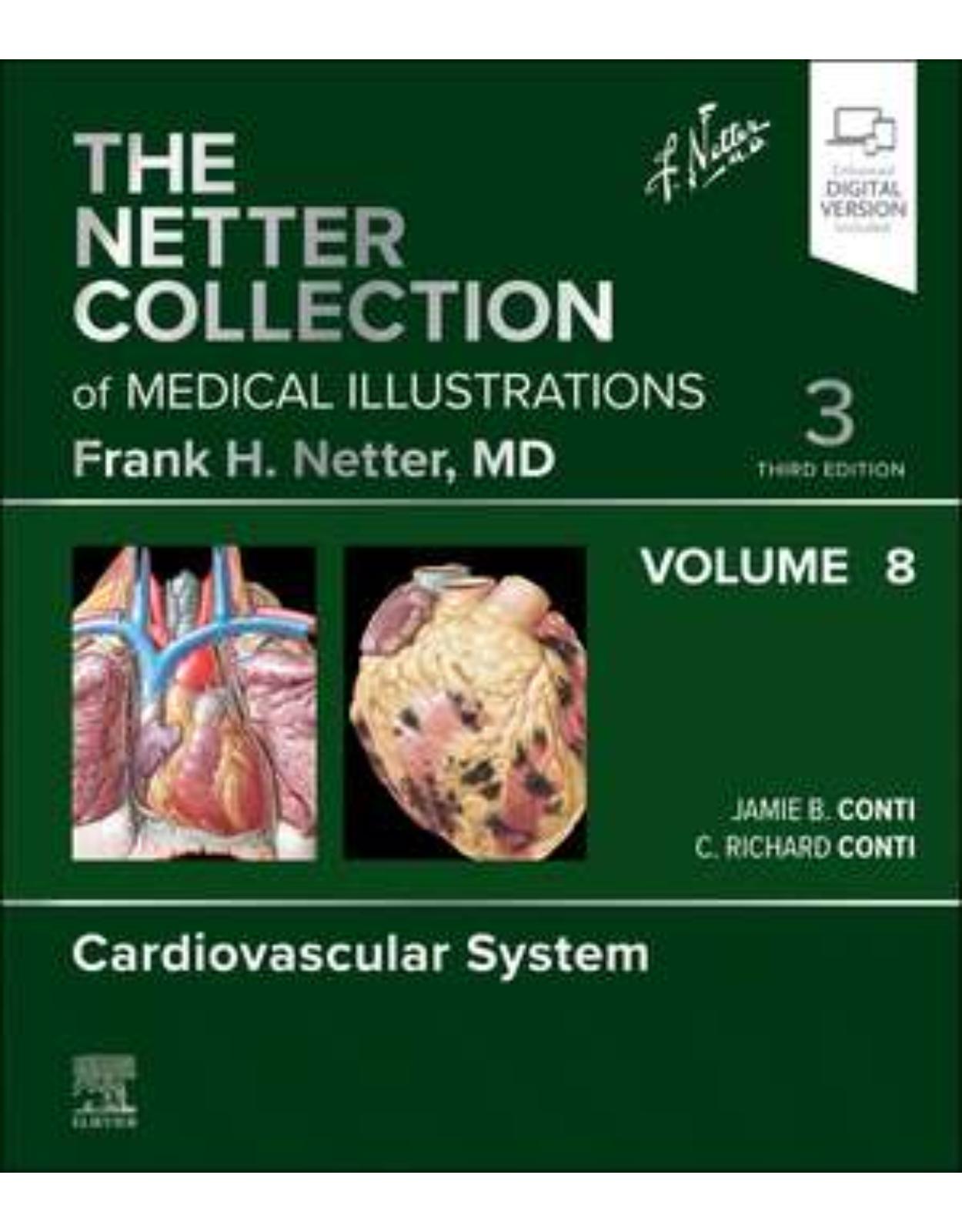
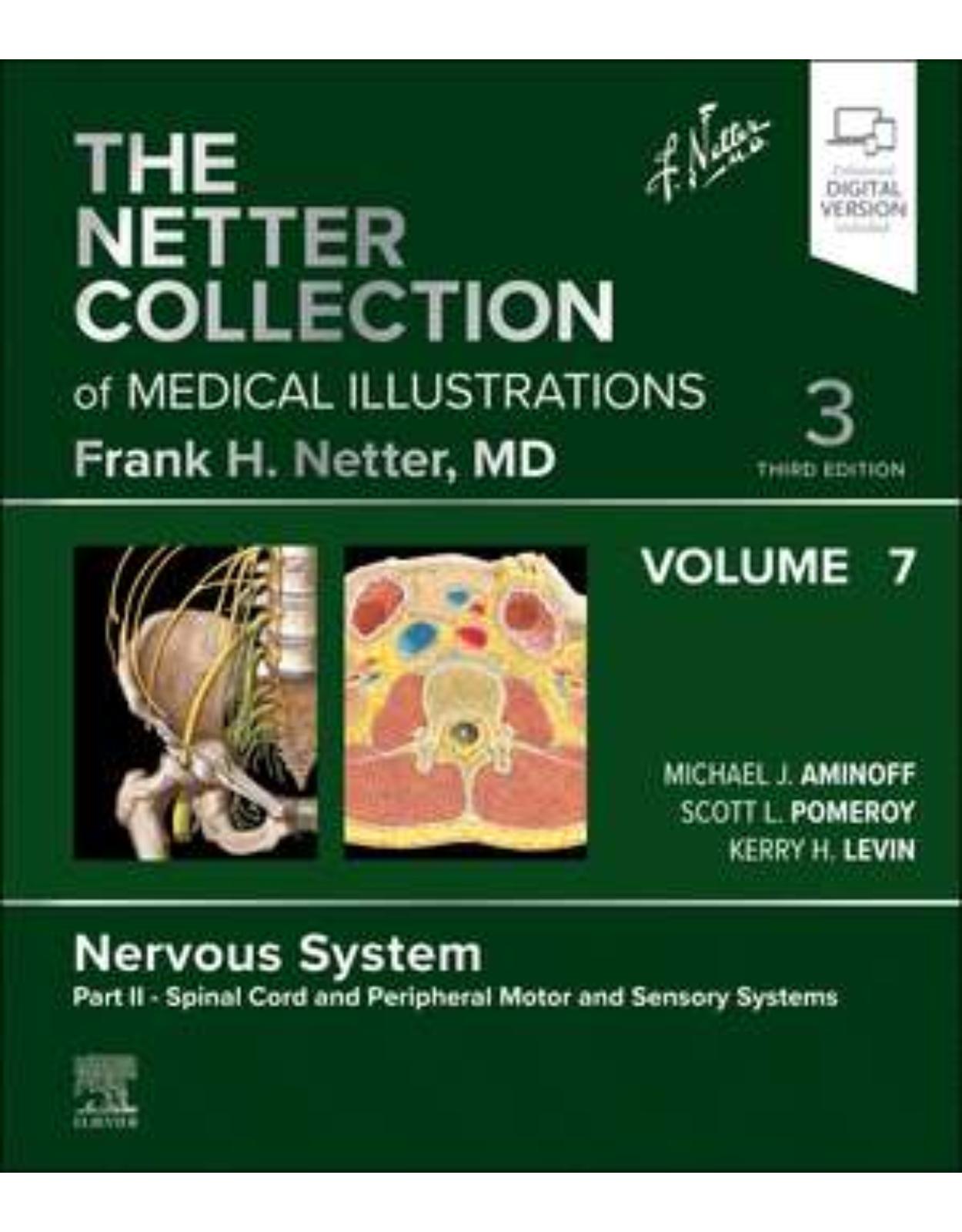
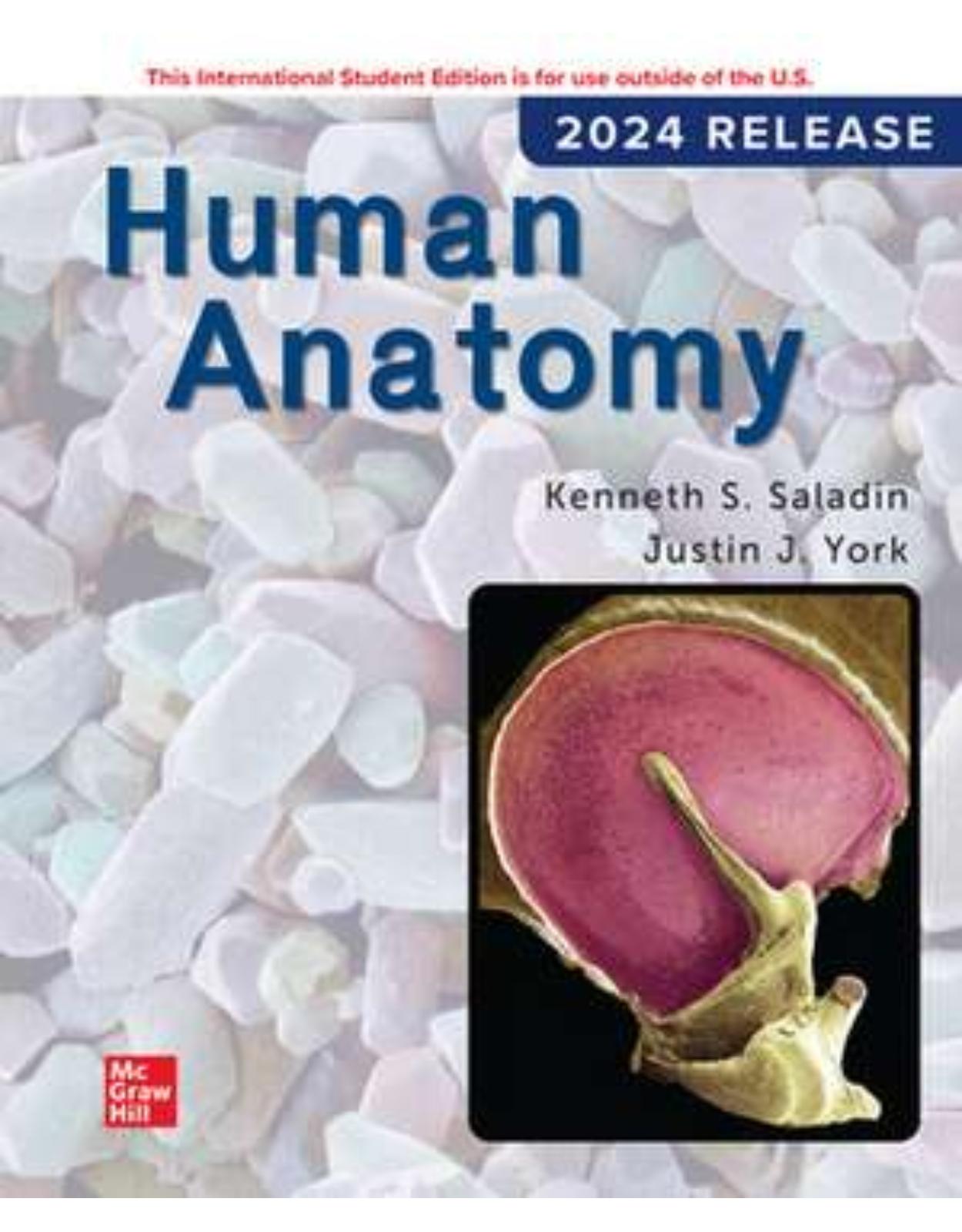
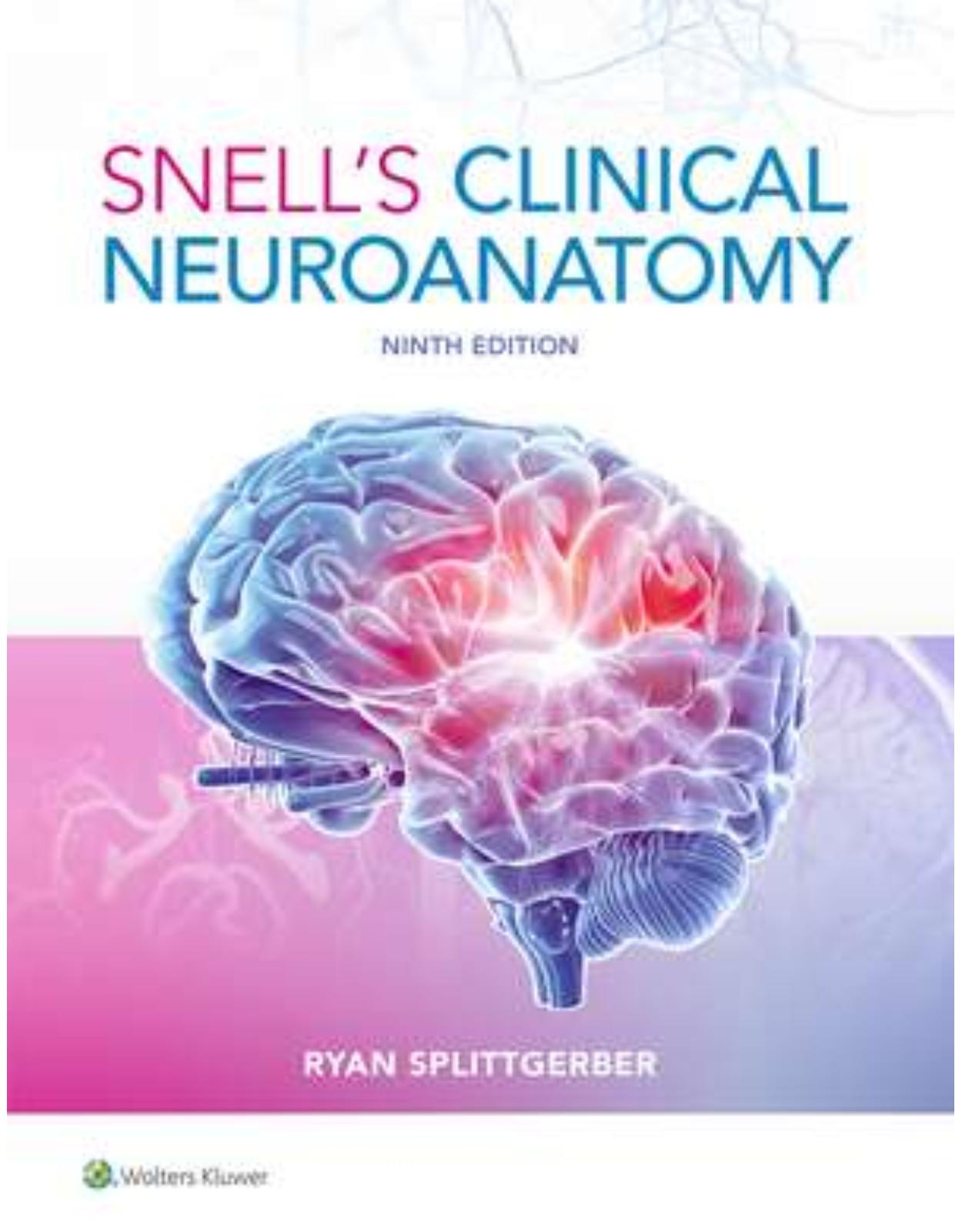
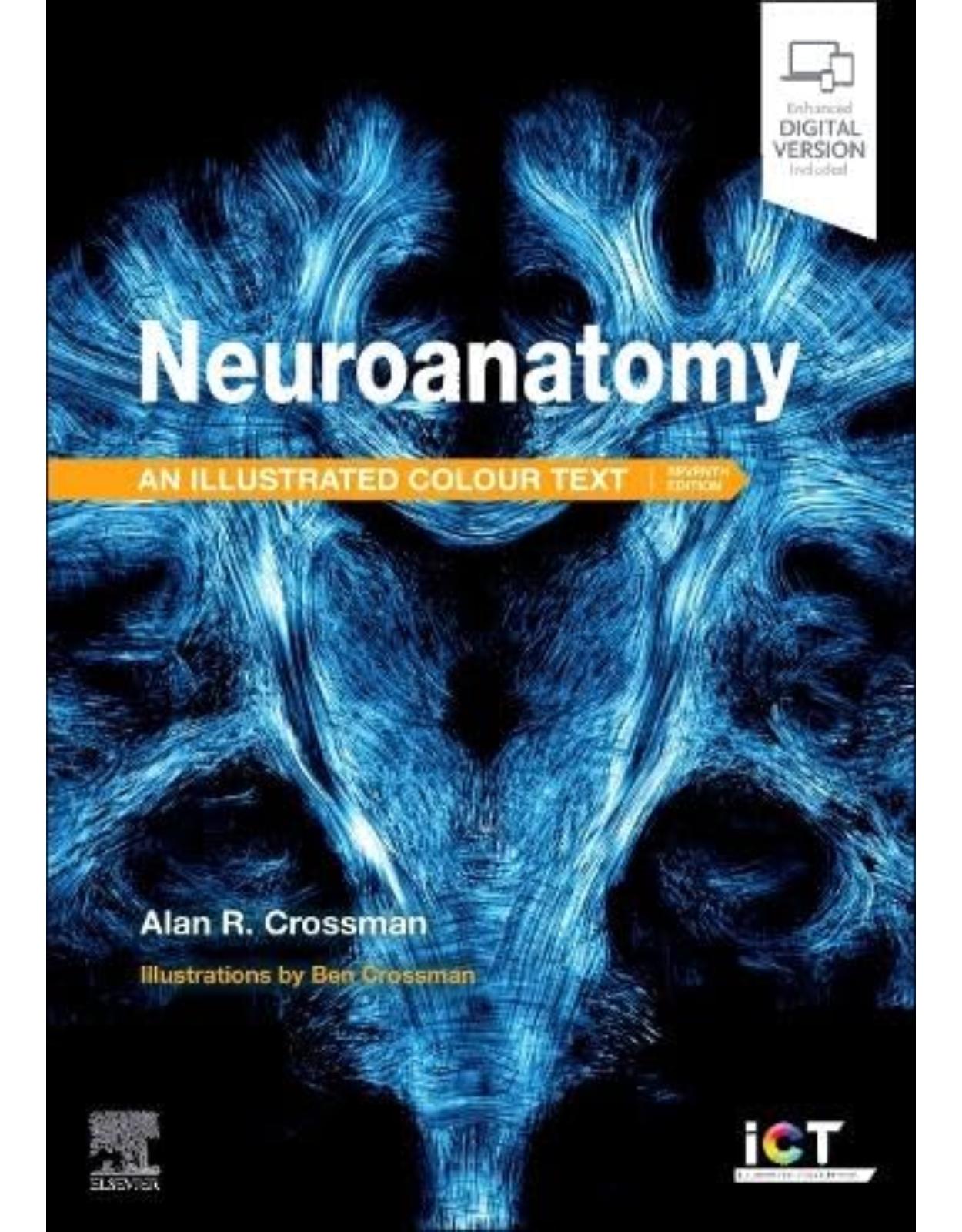
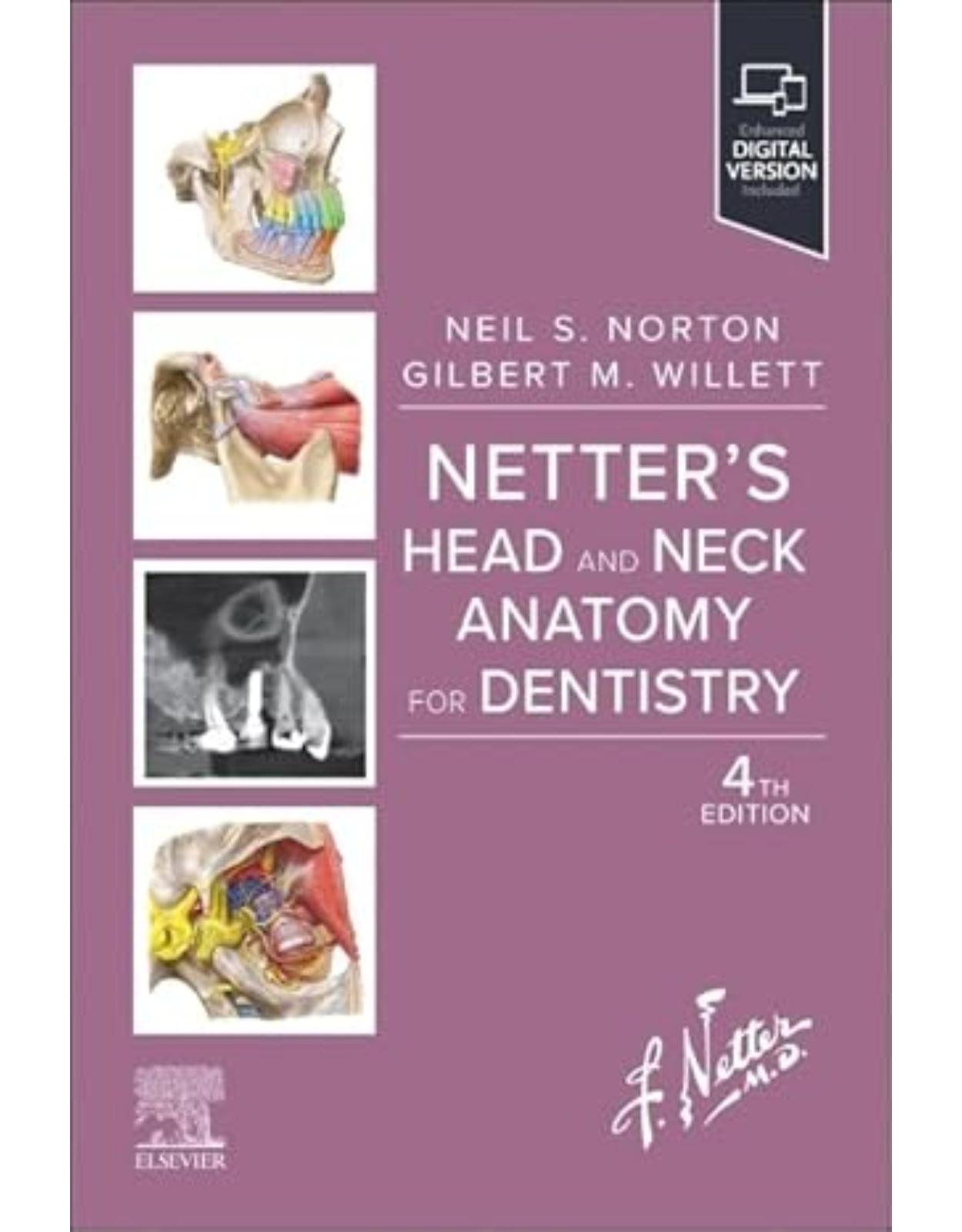
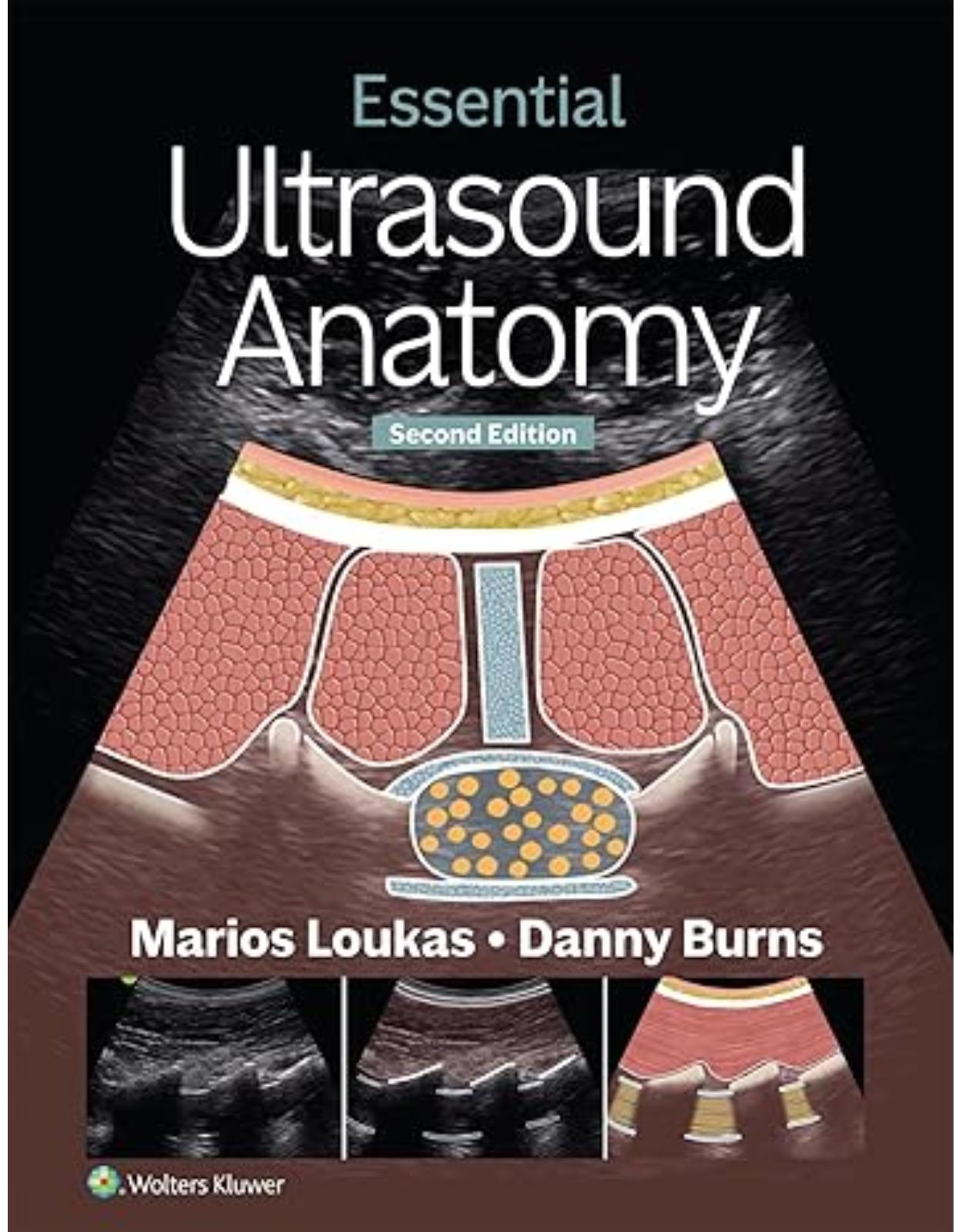
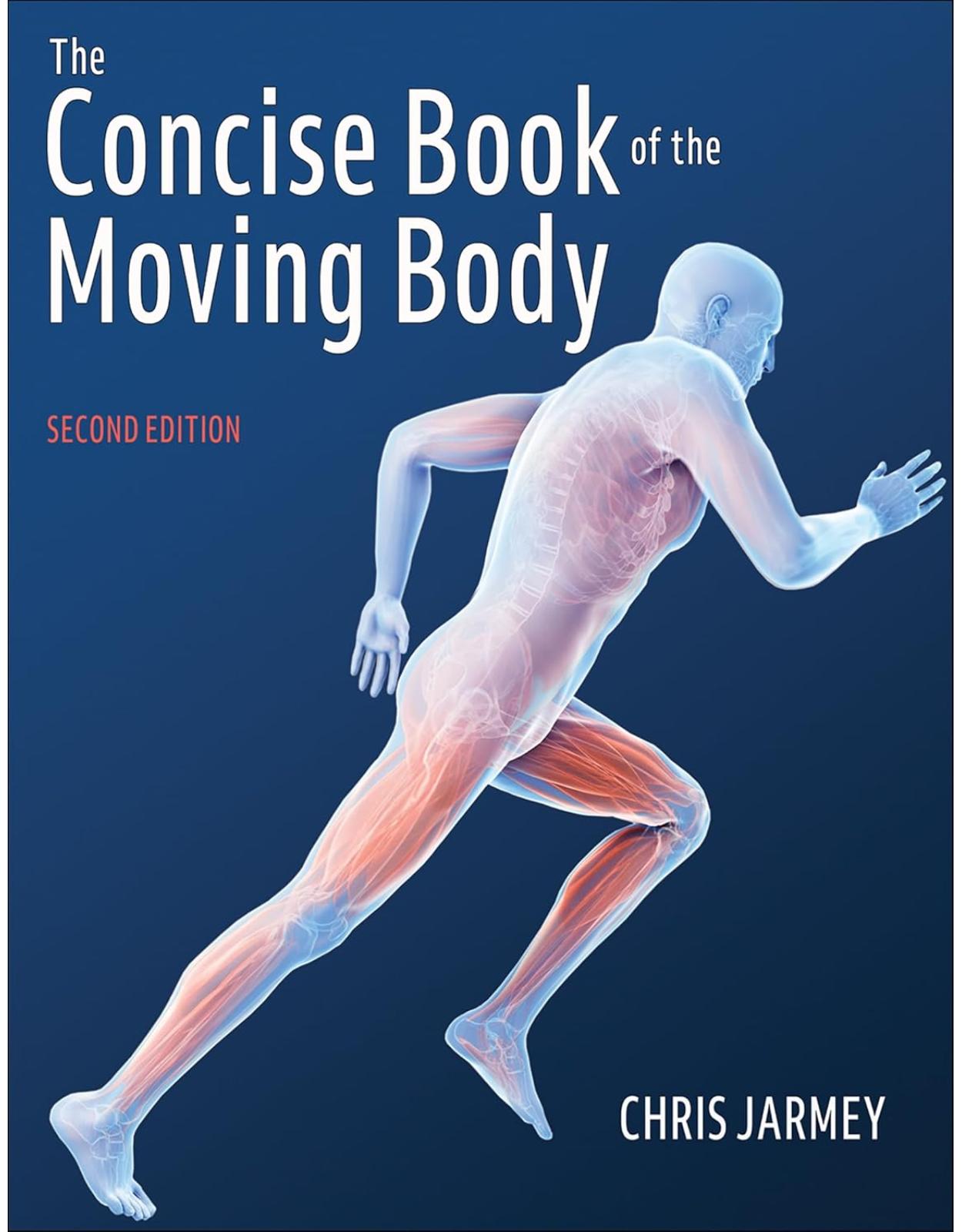
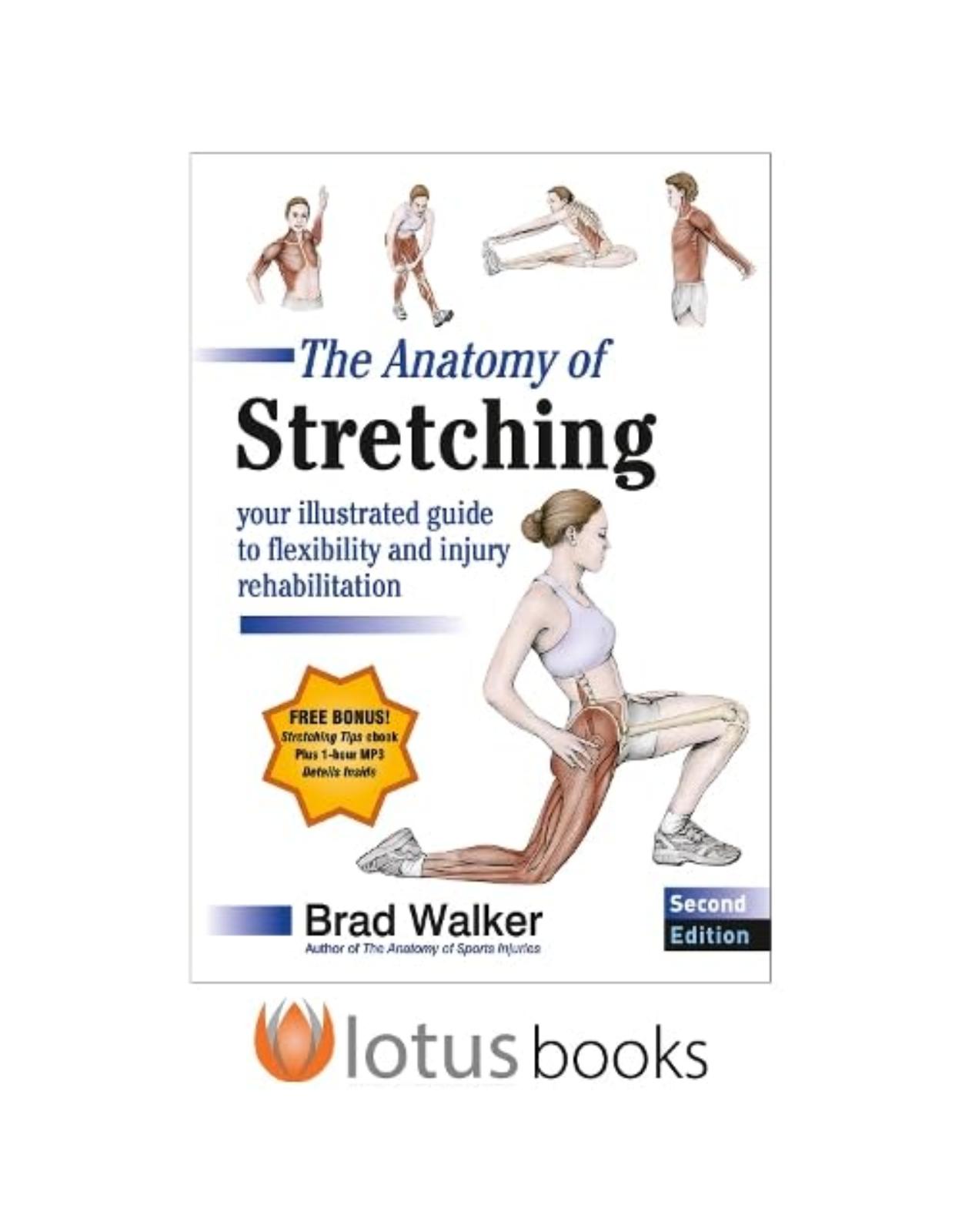
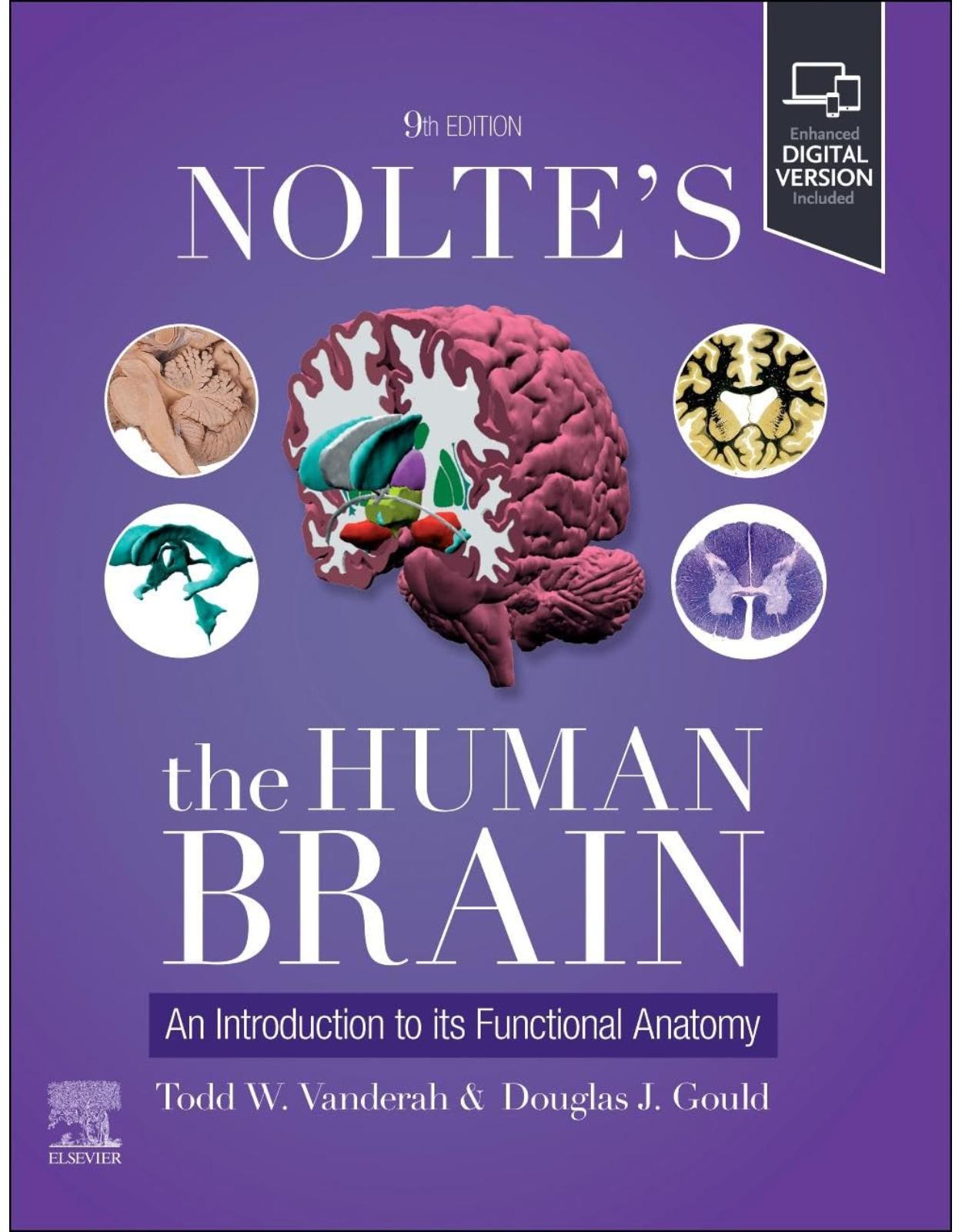
Clientii ebookshop.ro nu au adaugat inca opinii pentru acest produs. Fii primul care adauga o parere, folosind formularul de mai jos.